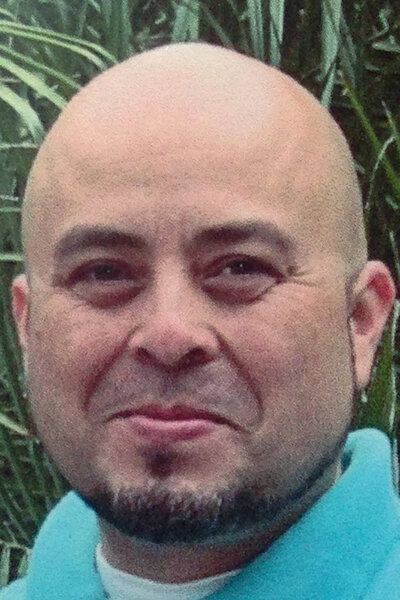LAX shooting: How a murderous few minutes unfolded for TSA officers
Loading...
Armed with a Smith & Wesson .223-caliber assault rifle with five 30-round ammunition clips and more boxes of bullets in his duffel bag, the young man moved deliberately through Terminal 3 of Los Angeles International Airport as panicked travelers scrambled for safety.
“Down! Down! There’s shooter!” someone yelled.
But unlike other recent mass shootings in the United States in which anyone seemed to be a target, the man with the rifle was looking specifically for Transportation Security Administration officers.
“Are you TSA,” he asked some people. When they answered “No,” he moved on.
He shot one TSA officer – 39 year-old Gerardo Hernandez, whose family had moved to the US from El Salvador when he was 15 – going back down an escalator to shoot him again when he saw the wounded man moving, then shot two more TSA officers. Several passengers were injured in the chaos.
"He was looking around," Demetrius Trammel told the Los Angeles Times. "He was calm, pacing, scanning the crowd, like he was looking for somebody specifically."
Many questions remain about Paul Anthony Ciancia, the man law enforcement officials say was the shooter Friday morning at LAX. Shot several times by airport police officers who moved quickly to confront him near a food court in Terminal 3 – TSA officers are unarmed – he is being treated at an area hospital and is so far unable to communicate.
Was there anything in his background to indicate a violent nature? Did he get the gun legally? Why did he target TSA officers as they went about their business of checking tickets and boarding passes, noting laptop computers and thousands of clear plastic bags of cosmetics, watching scanner screens and patting down some travelers lined up to pass through X-ray machines?
Ciancia’s duffel bag also contained a signed handwritten letter stating that he'd "made the conscious decision to try to kill" TSA employees and that he wanted to "instill fear in their traitorous minds," FBI Agent in Charge David Bowdich said at a press conference Saturday.
"Black, white, yellow, brown, I don't discriminate," the note read, according to a law enforcement official who spoke to the Associated Press.
The letter also mentioned "fiat currency" and "NWO" – possible references to the “New World Order,” a conspiracy theory warning of a totalitarian one-world government.
Established in the wake of the 911 terrorist attacks as part of the new Homeland Security Department, the TSA is tasked with securing the nation’s airports, including the screening of all commercial airline passengers and baggage. It has run into some controversy over the years, especially what critics say is the unnecessarily intrusive pat-down and X-ray of passengers.
Ciancia has no criminal record, authorities say, and comments from classmates at a private high school back in Wilmington, Del., indicate a quiet youth who kept to himself, had few friends, and may have been bullied.
He had studied in Florida to be a motorcycle mechanic – his well-respected family owns an auto repair business – then moved to Los Angeles last year where he lived in an apartment complex. Roommates told police they had seen him Thursday, but that nothing he said or did hinted at the trouble to come.
But family members in New Jersey were worried about him, and his father had heard that his son had a gun. The elder Mr. Ciancia called the police chief in Pennsville, N.J., who in turn called the Los Angeles Police Department. LAPD officers went to Paul Ciancia’s apartment Friday morning, but by then the shooting at LAX had begun.
Mr. Hernandez is the first TSA officer killed in the line of duty in the agency's 12-year history.
"He was always excited to go to work and enjoyed the interactions with the passengers at LAX," his wife Ana said Saturday in a brief statement to reporters in front of the family’s home in the San Fernando Valley. "He was a joyful person, always smiling. He took pride in his duty for the American public and for the TSA mission."
"Gerardo was a great man who always showed his love for our family,” Mrs. Hernandez, who works at Warner Bros., said. “He was always there to help anyone in need and always made people laugh with his wonderful sense of humor.”
"All he talked about was his family," friend and former TSA co-worker Kevin Maxwell told KNBC-TV. "He was very proud of his son, who played football." The couple had a daughter as well.
Charged with murder in the death of TSA officer Hernandez, as well as with commission of violence at an international airport, Ciancia could face the death penalty.








